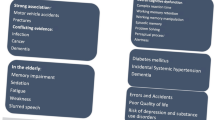Abstract
The dependence liability of benzodiazepines in the context of their use as hypnotics (i.e. by insomnia patients as pre-sleep medications) is unresolved. A recent study found that insomniacs self administer capsules at bedtime at a high rate, with triazolam (0.25 mg) taken as often as placebo. This study sought to determine if differential self administration would develop when multiple capsules are available nightly. Eighteen men and women, age 21–45 years, with insomnia complaints (nine with objective sleep disturbance and nine without) were studied, I week with placebo and I week with triazolam (0.25 mg). The two conditions were administered double-blind and presented in a counter-balanced order with a week between conditions. In each condition, after 3 consecutive sampling nights of the available single capsule for that condition, subjects could self administer 0–3 capsules before bed on the 4 subsequent nights. Triazolam was self administered as many nights as placebo, but the number of placebo capsules self administered was twice that of triazolam capsules. The objective insomniacs self administered more capsules than the subjective insomniacs and neither group differentially choose triazolam over placebo. The number of triazolam capsules taken nightly was stable and the number of placebo capsules variable. It is concluded that insomniacs show no shortterm escalation of triazolam dose, but do choose an increased and variable number of placebos, a pattern which is interpreted as being insomnia relief-seeking behavior.
Similar content being viewed by others
References
American Psychiatric Association (1990) Benzodiazepine dependence, toxicity, and abuse. American Psychiatric Association, Washington, DC
Consensus Conference (1984) Drugs and insomnia. JAMA 251:2410–2414
de Wit H, Uhlenhuth EH, Hedeker D, McCracken S, Johanson CE (1986) Lack of preference for diazepam in anxious volunteers. Arch Gen Psychiatry 43:533–541
de Wit H, Johanson CE, Uhlenhuth EH (1991) Testing the abuse liability of anxiolytic and hypnotic drugs in humans. Drug Alcohol Depen 28:83–111
Hallstrom C (1993) Benzodiazepine dependence. Medical Publications, Oxford
Mellinger GD, Balter MB, Uhlenhuth EH (1985) Insomnia and it treatment. Arch Gen Psychiatry 42:225–232
Rechtschaffen A, Kales A (1968) A manual of standardized terminology, techniques and scoring system for sleep stages of human subjects. US Govt Printing Office, USPHS, Washington, DC
Roehrs T, Zorick F, Wittig R, Roth T (1985) Efficacy of a reduced triazolam dose in elderly insomniacs. Neurobiol Aging 6:293–296
Roehrs T, Merlotti L, Zorick FJ, Roth T (1992) Rebound insomnia and hypnotic self administration. Psychopharmacology 107:480–484
Roth T, Roehrs T, Zorick F (1983) Pharmacology and hypnotic efficacy of triazolam. Pharmacotherapy 3:137–148
Author information
Authors and Affiliations
About this article
Cite this article
Roehrs, T., Pedrosi, B., Rosenthal, L. et al. Hypnotic self administration and dose escalation. Psychopharmacology 127, 150–154 (1996). https://doi.org/10.1007/BF02805988
Received:
Accepted:
Issue Date:
DOI: https://doi.org/10.1007/BF02805988




